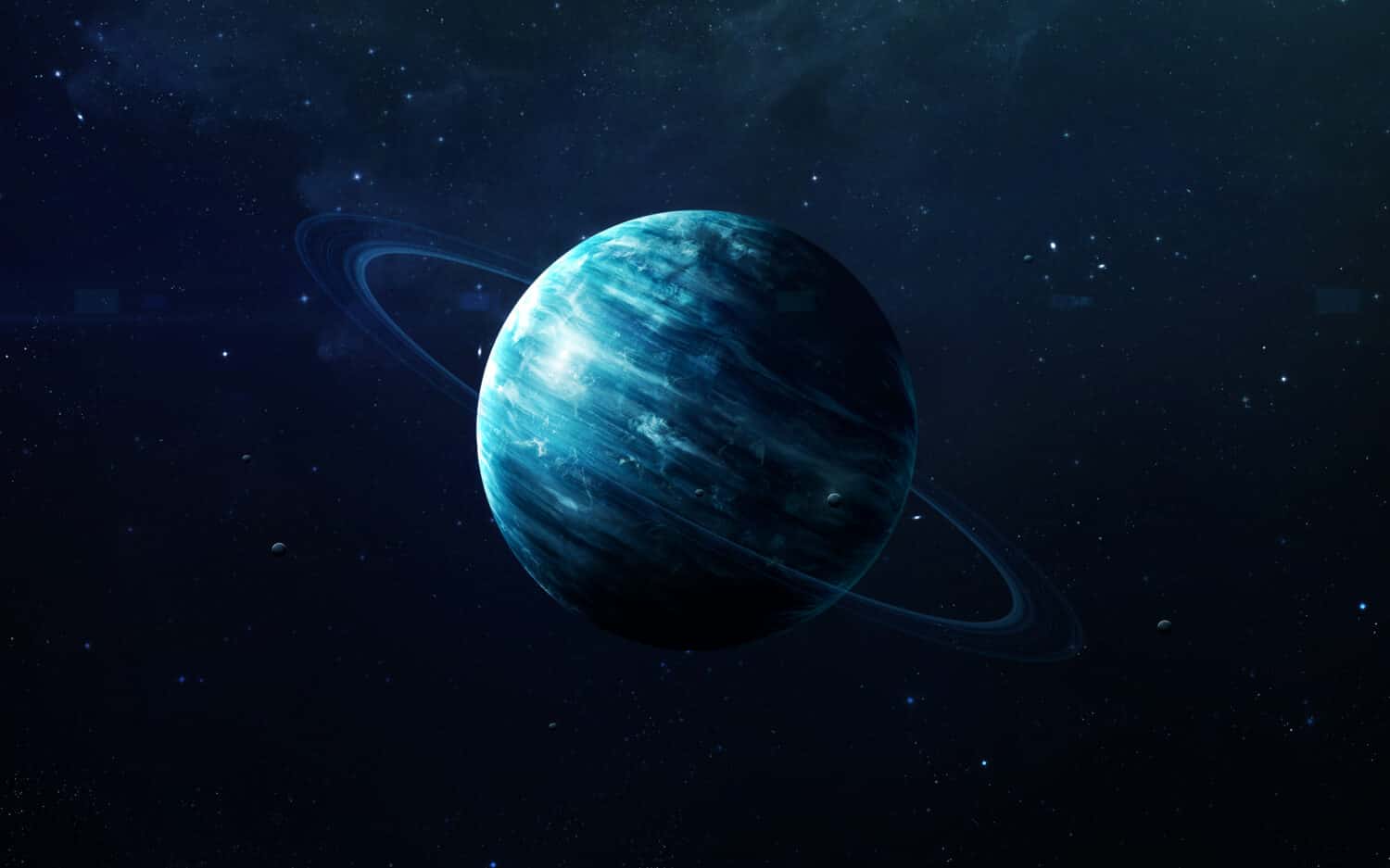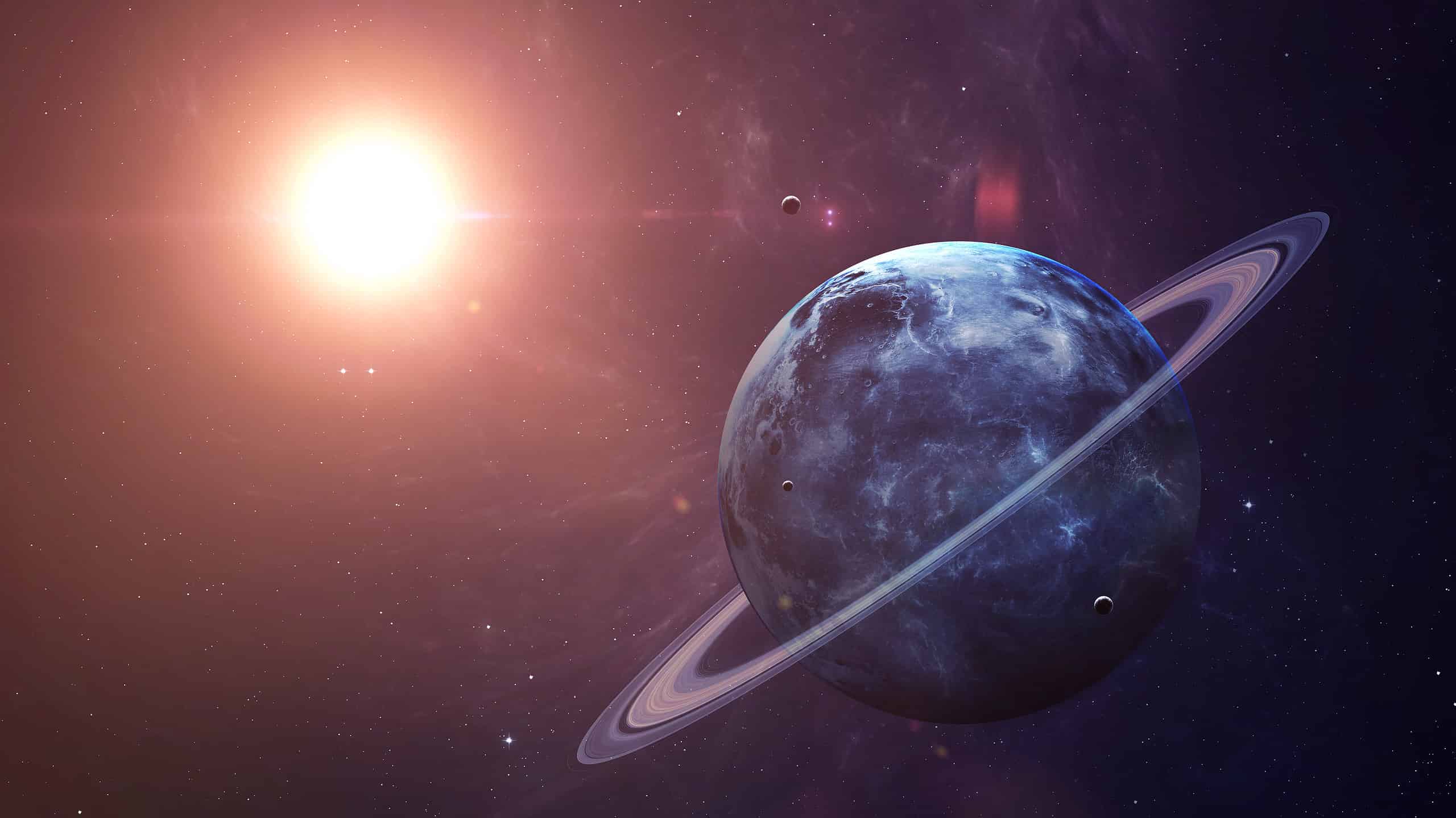Let’s face it, Uranus is the butt of all space jokes. Despite this, the seventh planet from the Sun has a fascinating history, from its discovery centuries ago to its modern-day status.
Uranus is a part of our solar system, which formed billions of years ago. Along with the other seven planets, our solar system contains dwarf planets, moons, asteroids, comets, and meteoroids. Though Uranus’ discovery took place over 200 years ago, there’s still plenty to learn about this fascinating planet.

Uranus is the seventh planet from the Sun.
©Vadim Sadovski/Shutterstock.com
When Was Uranus Discovered?
Uranus was discovered in 1781 by Sir William Herschel while looking for comets using a telescope. Interestingly, Uranus is the first planet to be discovered via telescope. Mercury, Venus, Mars, Jupiter, and Saturn are all bright enough to be visible to the naked eye.
According to an article from St. John’s College, Herschel was a musician and amateur astronomer who was dissatisfied with the telescopes of his day. As a result, he decided to construct his own.
In Hershel’s own words, the discovery of Uranus was “not owing to chance.” It was a result of his thorough studying of the heavens which marked a new kind of astronomical practice.
Hershel’s discovery led to support for his future investigations of space, as well as a pension and recognition from King George III himself. He went on to discover two of Uranus’ moons and continued to make larger and more powerful telescopes.

Sir Wiliam Herschel discovered Uranus in 1781.
©Everett Collection/Shutterstock.com
How Did Uranus Get Its Name?
Originally, Hershel wanted to name his discovery Georgium Sidus (Gergian Star) after King George III. This only increased his favor with George III, who was delighted by the planet’s discovery.
It’s not uncommon for explorers to name new lands after royalty, but Hershel’s suggestion wasn’t popular with other astronomers. Instead, German astronomer Johan Elert Bode suggested naming the planet Uranus after the Greek god of the sky.
According to Greek mythology, Uranus mated with Gaea (Earth), and the pair had six sons and six daughters. One of Uranus and Gaea’s many children was named Cronos. Roman mythology equates Cronos with Saturn, who in turn fathered Jupiter, Neptune, and Pluto.
Alternative Names for Uranus
We know that Georgium Sidus was the first name proposed for Uranus, but the planet has several nicknames as well. Uranus is sometimes called the “bulls-eye planet” due to its unusual verticle rings, making it appear like a bullseye on a target.
Uranus is also an Ice Giant with a unique and beautiful pale blue color. The majority of Uranus’ mass is made up of “icy” materials such as water, methane, and ammonia above a small rocky core.

Uranus is sometimes called the “bulls-eye” planet.
©NASA images/Shutterstock.com
Fun Facts About Uranus
Uranus is the third largest planet in our solar system, surrounded by 13 faint rings and 27 small moons, reports NASA. Uranus is a cold and windy Ice Giant with extreme and volatile temperatures, pressures, and materials characterizing this planet. For this reason, Uranus’ environment is not conducive to life as we know it.
It’s difficult to fathom just how far away Uranus is from Earth. The bulls-eye planet is 19.8 astronomical units away from the Sun. One au is the distance from the Sun to the Earth, which is approximately 93 million miles.
Unlike other planets humans have explored via space shuttle, Uranus doesn’t have a true surface. The planet is mostly swirling fluid, so there wouldn’t be anywhere for a spacecraft to land. Additionally, Uranus’ atmosphere has such extreme atmospheres and temperatures that it would destroy a metal spacecraft that tried to fly through it.
Thank you for reading! Have some feedback for us? Contact the AZ Animals editorial team.








